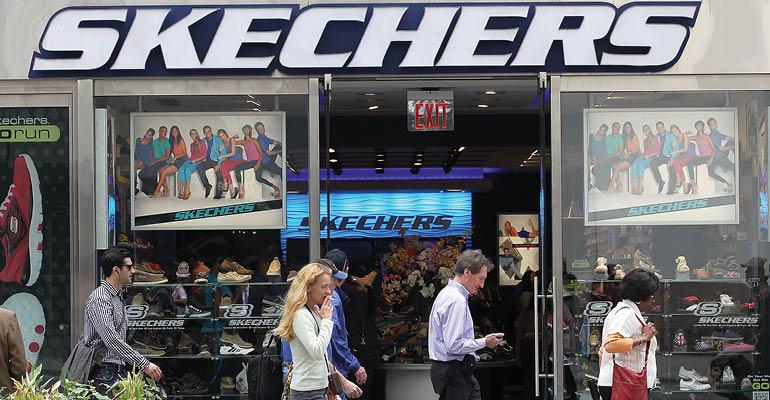Within the 24,000-sq.-ft. space, the company aims to debut features that will appear in other stores throughout its retail network.
Footwear designer Skechers was already having a fiscal year of mixed operating results, with strong net sales in its global wholesale and retail business lines, offset by higher expenses. The result was lower net earnings. So when the company opened a new superstore concept in Ontario Mills, Calif., industry experts wondered whether the move would be enough to even the playing field between Skechers and its competitors.
Within the 24,000-sq.-ft. space, the company aims to debut features that will appear in other stores throughout its retail network. Skechers did not specify whether the new superstore format would be expanded throughout the U.S., and declined to comment on the development further.
The superstore in Ontario Mills offers a range of features meant to help shoppers buy their footwear more efficiently. Merchandise is organized into departments including women’s lifestyle and performance, men’s lifestyle and performance and work footwear, among others. For parents with their hands full, the store also offers a kids’ area furnished with a candy shop and theater space screening custom Skechers cartoons and characters.
The Ontario superstore is among just several large-format stores that Skechers operates (the others are in Las Vegas and Gardena, Va.), but it does have one unique element—a 5,000-sq.-ft. apparel an accessories interior store.
The superstore is designed to give the shopper “the finest retail experience possible,” according to the company. “With footwear, accessories and apparel, we’re delivering Skechers products from head to toe,” Michael Greenberg, president of Skechers, said in a statement. “We look forward to introducing features debuting here in more stores throughout our retail network through the second half of this year and into 2018.”
The question, according to retail experts, is whether that fine experience will allow Skechers to compete effectively in a very tough category.
“They are in a good category, but they have a hard fight on their hands,” says Howard Davidowitz, chairman of Davidowitz & Associates Inc., a national retail consulting and investment-banking firm headquartered in New York City. “If they build stores, they have to have a lot of interactive elements where the customer can be interested and entertained, or else they will buy online from Amazon, Nike or anyone else.”
Nike stores include such features as treadmills that measure customers’ feet. Adidas has made a name for itself with its BOOST technology, and even Amazon has won over Nike to sell a limited selection of the latter’s sneakers in its stores for the first time.
The Manhattan Beach, Calif.-based Skechers will announce its second-quarter operating results on Thursday. Looking ahead, company executives said they expect to see net sales increase to $975 million. If the retailer does meet that expectation, it would set a second-quarter sales record.
Equity analysts believe concerns over Skechers’ exposure to its U.S. wholesale channel are declining, according to a news report citing Cowen equity analyst John Kernan. The company’s previous earnings report, from the first quarter of 2017, supports the more positive outlook.
Skechers’ quarterly comp store sales increased by 2.9 percent. In terms of net sales, the company saw an increase of 9.6 percent to $1 billion. That result was attributed to a 16.8 percent increase in its international wholesale business, and a 12.8 percent increase in its company-owned global retail business.
Skechers’ first-quarter results indicate that its international sales are expanding, while domestic business has moved slower.
“They’ve got to differentiate themselves through these stores,” Davidowitz says. “They have to find ways—maybe it’s through food, special vitamins—they have to do a lot to get the customer going to their stores.”

